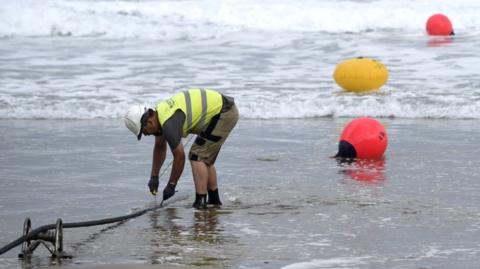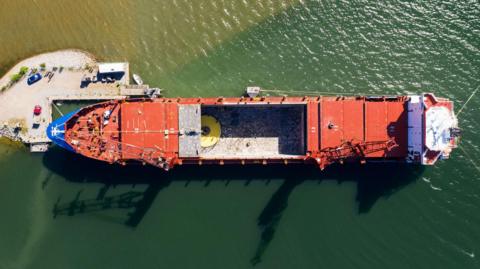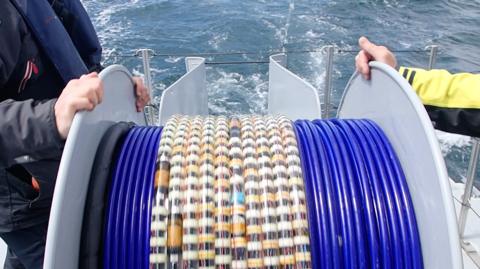The diver had found the fibre optic cable lying on the seabed of the North Sea. He swam closer, until it was near enough to touch.
He reached out his hand. But someone could tell he was lurking there. Someone was watching.
"He stops and just touches the cable lightly, you clearly see the signal," says Daniel Gerwig, global sales manager at AP Sensing, a German technology company. "The acoustic energy which travels through the fibre is basically disturbing our signal. We can measure this disturbance."
Multiple reports of damaged telecommunications cables in the Baltic Sea have raised alarm in recent months.
So important are these cables, which carry huge volumes of internet data between countries, that Nato has launched a mission called "Baltic Sentry", to patrol the Baltic Sea with aircraft, warships and drones.
The EU is also stepping up measures to monitor and protect cables.
Despite those efforts the authorities cannot be everywhere at once.
So, some companies are trying to monitor what's going on in the vicinity of any cable – by using fibre optic signals to listen out for surreptitious underwater drones, or hostile vessels dragging their anchors along the seabed.


